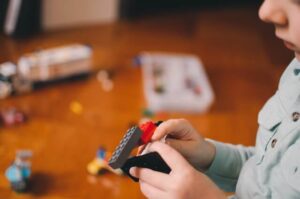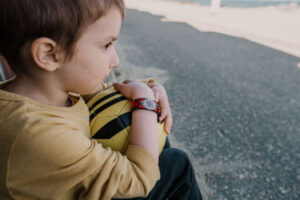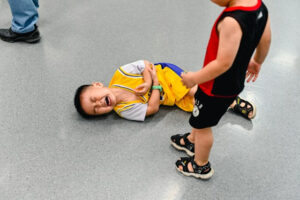Autism Spectrum Disorder (ASD) is a complex condition that affects an individual’s social interaction, communication, and behavior. One of the key characteristics often associated with ASD is the tendency to have restricted or limited interests. This article aims to delve into the relationship between autism and limited interests, shedding light on this unique aspect of the disorder.
Understanding Autism Spectrum Disorder (ASD)
Autism Spectrum Disorder is a neurodevelopmental condition that affects how people perceive and interact with the world around them. The term “spectrum” refers to the wide range of symptoms, skills, and levels of disability in functioning that can occur in people with ASD.
Individuals with ASD often have difficulties with social interaction and communication. They might also exhibit repetitive behaviors, rigid routines, and have a strong preference for sameness. Another common trait is a deep interest in specific topics or activities – these are what we refer to as ‘limited interests.’
Limited Interests in Autism
Limited interests, or ‘special interests,’ as they are often called, are intense, focused fascinations with specific subjects, items, or activities. These interests are more than just hobbies; they are passions that individuals with autism pursue fervently and often to the exclusion of other activities.
These interests may revolve around a wide variety of subjects, from dinosaurs to trains to specific historical periods. Some individuals might have a fascination with intricate systems like subway maps or weather patterns. Others may focus on particular aspects of a subject, like memorizing statistics about their favorite sports team.
Common Areas of Interest for Children with Autism
Children with autism often exhibit interests that are both intense and narrow in scope. The specific subjects of these interests can vary widely from child to child, but certain themes or categories of interest commonly emerge among children with autism. These include:
- Trains and Vehicles: Many children with autism display a fascination with trains, cars, or other types of vehicles. They might memorize intricate details about different models or enjoy watching these vehicles in motion.
- Digital Media: Video games or computer-based activities are often of interest, particularly those with repetitive elements or detailed virtual worlds.
- Animals: Whether it’s dogs, dinosaurs, or sea creatures, a love for animals is a common interest among children with autism. This can manifest in learning facts about different species or having a deep emotional connection with pets.
- Numbers and Patterns: Some children with autism take great interest in numbers, patterns, and systems, enjoying activities like solving puzzles or studying maps and weather patterns.
- Music: Some children may show a heightened interest in music and may memorize songs, play an instrument, or even display a talent for singing.
It’s important to note that every child with autism is unique, and these interests should be encouraged and embraced as they provide comfort, improve learning, and enable a better understanding of the child’s world.
The Role of Limited Interests
While these limited interests might seem peculiar to some, they play a vital role in the lives of those with autism. Special interests can provide comfort and structure, helping individuals to make sense of their surroundings. They can act as a safe haven when the world becomes overwhelming.
Moreover, these interests can also be a source of immense joy and self-esteem, providing an area where individuals with autism can excel and be recognized for their expertise.
Difficulties Caused by Narrow Interests
Despite the benefits, narrow interests can sometimes pose challenges. For individuals with autism, the intense focus on a special interest can lead to social isolation as it might be difficult for peers to relate to or share in their passion to the same extent. This can result in missed opportunities for social interaction and friendship development.
In educational settings, the inclination toward a specific interest might interfere with a broader curriculum, making it challenging for educators to engage the student in diverse topics. They may also become fixated on their special interest to the extent that it distracts from their daily tasks or responsibilities.
Moreover, if the special interest is not socially accepted or understood, it may lead to negative judgments or stigmatization from others. For instance, an adult with autism might face judgment for having an interest typically associated with children.
It’s crucial to find a balanced approach that allows individuals with autism to pursue their interests while also encouraging them to explore new areas and develop social skills. Understanding and empathy from those around them can go a long way in ensuring that their special interests serve as a strength rather than a hurdle.
Harnessing the Power of Limited Interests
Rather than trying to suppress these special interests, experts suggest that they should be embraced and used as a tool for learning and engagement. For example, if a child is fascinated by trains, this interest could be incorporated into teaching math or reading. This approach can help make learning more enjoyable and relevant for the individual.
In some cases, these interests have even paved the way for successful careers. For instance, Temple Grandin, a renowned animal scientist and autism advocate, transformed her interest in animal behavior into a thriving profession.
Conclusion
While the relationship between autism and limited interests can be challenging to navigate, it is also a unique aspect of autism that can be harnessed positively. By understanding and embracing these special interests, we can better support individuals with autism in their learning and development.
It’s important to remember that each person with autism is unique, with their own strengths, challenges, and interests. Recognizing and celebrating this diversity is a crucial step towards fostering a more inclusive and understanding society.
































